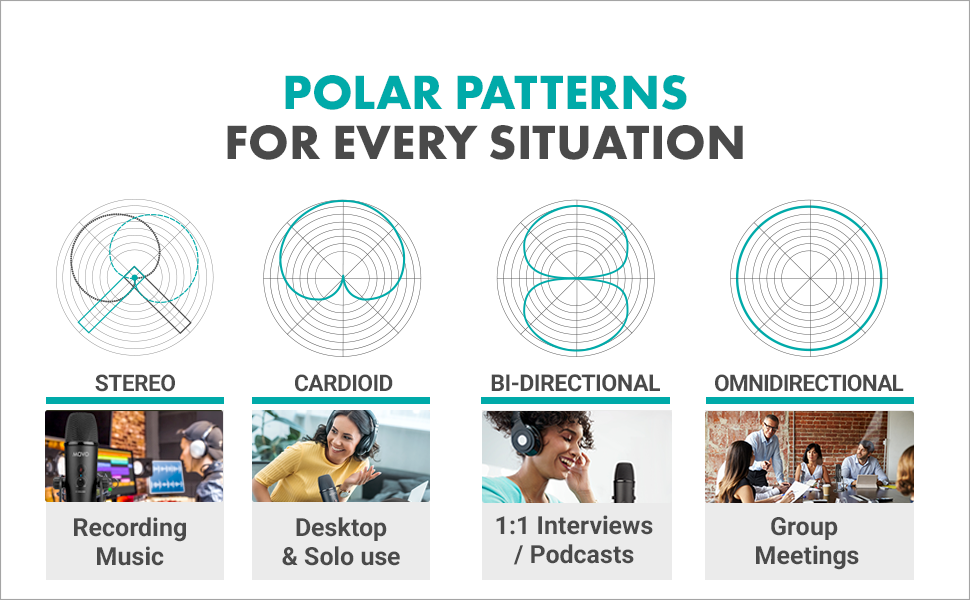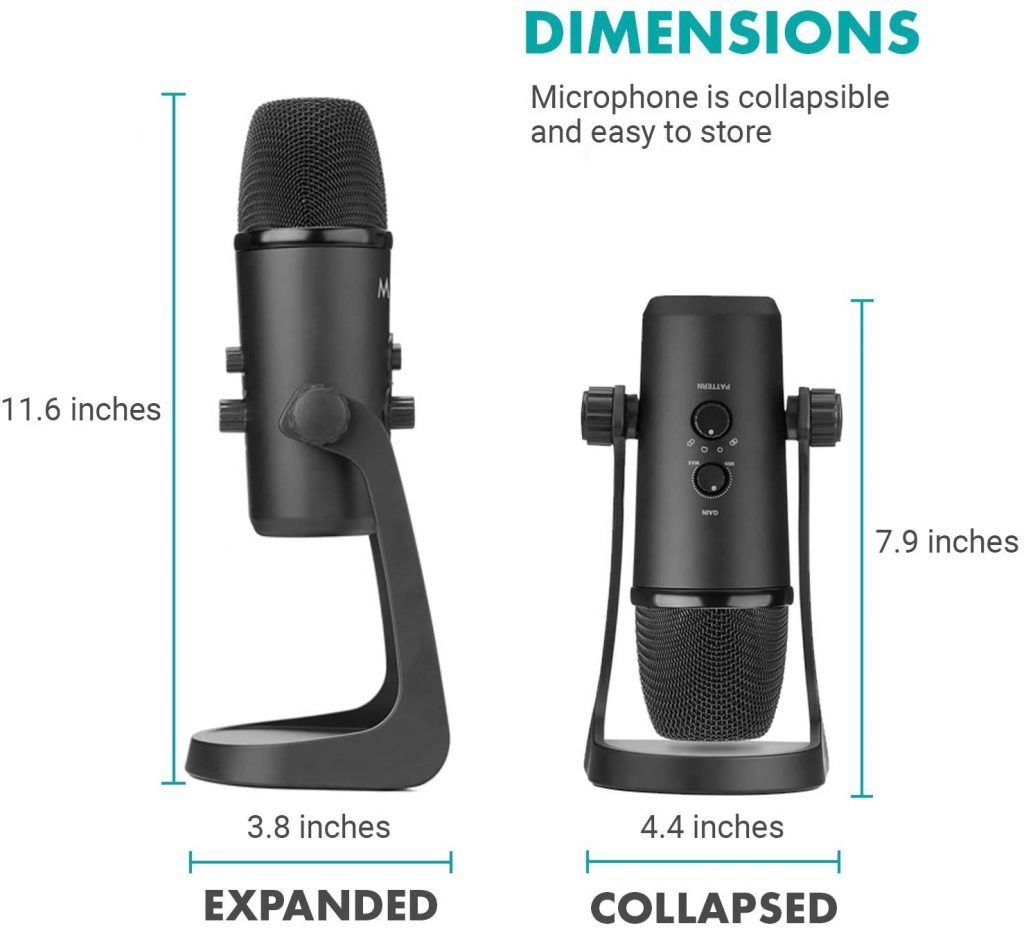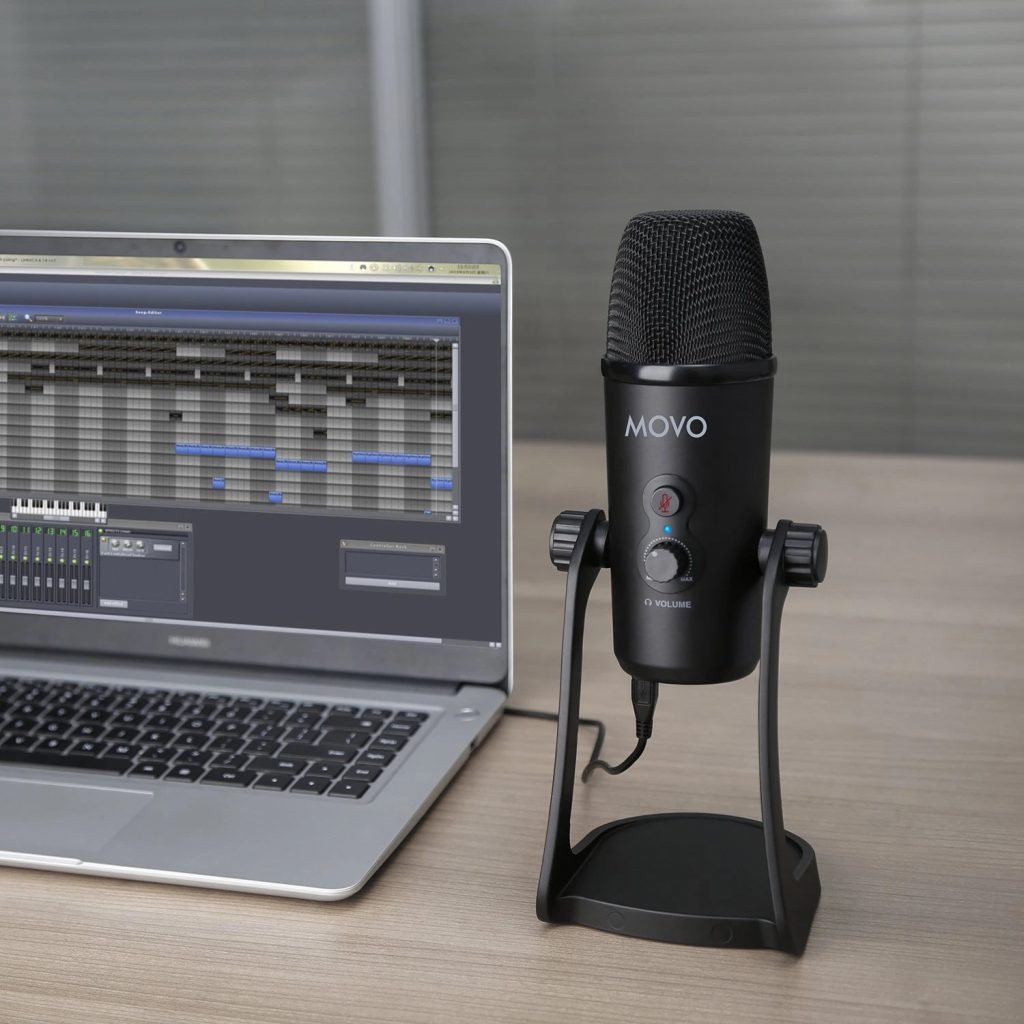Over the years we’ve covered a number of headsets but I don’t think I’ll ever forget my first time buying a pair of gaming headphones. At the time there were basically three brands. Turtle Beach and Tritton made up the low to mid-tier market and Astro Gaming was high end. Since then that market has expanded but a lot of them remain relatively small. Out of all of them, there is none smaller than microphones, besides maybe capture cards. When it comes to streaming or setups, the Blue Yeti is practically synonymous with gamers. So much so that I wouldn’t be shocked if some people didn’t know Blue was the brand and Yeti is one of their products. Despite this, HyperX has tried their luck with a couple microphones and Elgato also has theirs, with Movo also trying to find a demographic. Is there enough for Movo’s UM700 to resonate or is it a niche product that falls short?
Unlike a lot of products we look at, Movo does not consider the UM700 a gaming microphone, in fact, it’s literally branded as a generic USB microphone you’d use for a conference call or to work from home. As such, the packaging is fairly bland. With a white, grey, and turquoise color scheme, it almost goes out of its way to avoid making a statement. To the point where there is more information on what Movo stands for than features, you can expect from the product inside. Contrary to the initial impression, inside are two massive foam inserts that hold UM700 in place. It’s easily one of the nicer setups we’ve seen and makes the statements about Movo on the box stand out.

Two distinct things stood out about UM700 when removing it from its protective foam. The first is how heavy this product is. Seriously, you could probably do some serious damage with the base if you wanted to. On a high note, the weight gives it a premium feel and it’s very hard to accidentally move it on your desk. The other is the included pop filter. As nice as it is to have, mine came with a rather substantial crease, dent, and other abnormalities. Thankfully, the other side is pristine, so I simply turned it around but I could see someone replacing it or being turned off by how that looks out of the box. And, depending on how serious your recording needs are, it might make more sense to replace it anyway.
That said, UM700 isn’t a bad looking product. The included stand gives it just enough height where I can easily talk to it without leaning forward or buy an adapter. It’s also seriously well-constructed, to the point where you might have to try to damage it to actually succeed in doing so. Controls are also fairly thought out, to the point where the resistance on the polar pattern is legitimately challenging, at least to the point where it requires some effort, to change.

Unsurprisingly, given the Blue Yeti’s dominance in the USB microphone category, UM700 is heavily inspired by it. Headphone volume and mute is on the front, with pattern and gain on the back. On the bottom is a headphone jack, screw for an arm, and the most notable difference, micro-USB for power. As a result, it suffers from the same design issues HyperX attempted to solve with their QuadCast microphone. With mute on top and gain below, with power/headphone going out the back through either a hole in the stand or along a mic arm, it looks a lot cleaner. Especially as someone who uses a DAC with my headphones.
Set up was pretty straightforward. After connecting it to my Mac it worked instantly, with my PC working after a brief wait for the driver to install. Initial tests were interesting, to say the least. Despite being far cheaper than my HyperX QuadCast, it has far more gain than you could ever possibly want. At its peak, my boisterous voice is outright booming and every sound you could ever possibly want to hear was on full display. Seriously, if you wanted to hear my chair creak or my keyboard click, it was even better than if you were in the room with me. However, at this level, there is a substantial amount of background noise.
After a fair amount of trial and error, something I strongly suggest for any recordings, I was able to find a nice balance between background noise, clarity, and eliminating interference. This was about halfway on the gain if anyone was curious, giving you an idea just how much more runway was left. At that point, I still sounded clear and was a much more accurate representation of how I sound in real life or so I’m told anyway.

As an added bonus, even if the packaging claims UM700 works on PC and Mac, it will connect and work on a PlayStation 5. However, it doesn’t work well. At no point could I get rid of the buzzing sound in the background, something HyperX’s QuadCast had no issue preventing, though it still does a fantastic job capturing vocals. Unfortunately, due to how Sony designed the system, anyone connecting headphones needs to use UM700. Normally this wouldn’t be a problem but there is slight distortion and a fair amount of interference, something the QuadCast did not suffer from. These sounds also appear on PC and Mac, though they’re not as pronounced. At low volume you can only really hear it if you’re looking for the sound, it’s something you’ve heard a bunch or you’re very particular about sounds.
Movo UM700 Review – Verdict
For the money, it’s hard to beat UM700. A similar product from HyperX starts at $140 and even the ever-popular Blue Yeti is $130, whereas Movo wants just $99.95. Since it does offer a bit more than both in terms of sound, it will take a lot more trial and error to get just right. The amount of background noise and interference I UM700 offered compared to QuadCast at max gain was substantial and something you will want to watch. And while it’s unfortunate PlayStation 5 support isn’t that great, you will need to decide if that is a make or break feature. Add in great build quality, some included accessories, and more, it makes for a very versatile USB microphone.
[Editor’s Note: Movo UM700 was provided to us for review purposes.]
